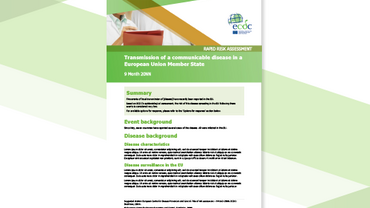Risk of importation and spread of malaria and other vector-borne diseases associated with the arrival of migrants to the EU, 22 October 2015
This rapid risk assessment assesses the specific risk related to importation and spread of vector borne diseases in the context of a large number of migrants to the EU. It does not cover other health needs for these populations.
Executive summary
Although cases of malaria and other vector-borne diseases in the EU may be associated with mobile populations newly arrived in Europe, such cases are not unexpected. A new rapid risk assessment fully assesses the situation, following a case of malaria reported in Sweden in a newly arrived migrant.
Activity of disease vectors such as ticks and mosquitoes is low in Europe over the winter months, which limits opportunities for the spread of vector-borne diseases such as malaria, leishmaniasis and schistosomiasis. However, the spread of louse-borne diseases as a result of crowded living conditions may affect migrant populations over winter.
Particularly important for the prevention of secondary cases or outbreaks of vector-borne diseases is the right to health for mobile populations and universal access to public health services, as well as rapid detection and treatment of any cases that are detected.
Preparedness in the EU with regards to vector-borne diseases requires the capacity to detect possible cases in areas where competent vectors are present, alongside strengthened surveillance systems.
Ensuring the right to health, offering health education and promotion, and improving general hygiene measures for migrants and other mobile populations may also help minimise any potential impact of imported cases of vector-borne diseases in the EU.





